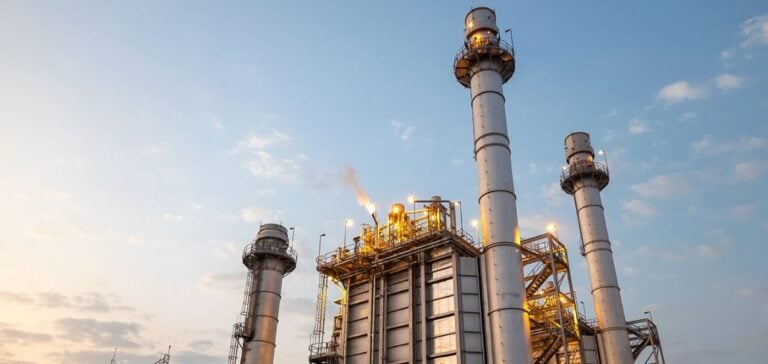The U.S. power sector has become the main driver of natural gas demand, increasing its consumption by an average of 3.5% per year over the past three years.
This trend contrasts with declining demand in the industrial, residential and commercial sectors.
In 2023, power generation companies consumed an average of 70 billion cubic feet (Ft3) of natural gas per day, representing 44.4% of total domestic use, according to LSEG data.
Since the beginning of the year, US power generators have stepped up their consumption of natural gas, taking advantage of extremely low prices.
This increase in gas use has partially replaced coal, although gas stocks remain high due to overproduction and stagnant exports.
Record production of gas-fired electricity
Data from the U.S. Energy Information Administration show that electricity producers generated 1,334 billion kilowatt-hours (kWh) between January and April 2024, an all-time record.
This represents an increase of 47 billion kWh (4%) over the same period the previous year.
Two-thirds of this increase came from gas-fired units, with the remainder mainly from solar farms.
Inflated inventories despite record consumption
Despite this increased consumption, gas inventories remain abnormally high.
At the end of April, inventories were 671 billion cubic feet (Ft3) above the seasonal average of the last ten years.
This surplus is partly due to a mild winter in 2023/24, which limited demand for gas for heating.
Lower costs for producers
In April, the cost of gas to power generators fell to an average of $2.05 per million British thermal units (MMBtu), the lowest level recorded since 1973 after adjusting for inflation.
These exceptionally low prices encouraged generators to run their units for longer hours, including the less efficient plants that usually operate only during peak periods.
Maximizing production
Single-cycle gas turbines and gas-fired steam generators, usually less efficient, operated at a record seasonal capacity factor of over 14% in April 2024, compared with 12% in April 2023.
Similarly, gas-fired steam turbines reached over 15% of their theoretical maximum capacity, the highest in over a decade.
The challenges of decarbonizing the electricity sector
The electricity sector’s growing dependence on natural gas raises concerns about the long-term sustainability of this energy source.
A rapid transition to decarbonized power systems could lead to a decline in demand for natural gas, at a time when other gas-consuming sectors are already in decline.
The trend towards electrification of heating and power systems in homes and businesses has reduced the direct use of natural gas.
Heat pumps and electric boilers have gradually replaced gas boilers, although the pace of heat pump sales has slowed due to high electricity prices and interest rates.
Persistent surplus
Despite record production, gas inventories remain high, largely due to recurring problems with the Freeport LNG export terminal.
Gas production reached a new peak in early July 2024, due to high temperatures, low wind speeds, and low gas prices.
However, inventories are still among the highest on record for this time of year.
Futures prices plummeted in July, returning close to multi-decade lows.
These extraordinarily low prices send a strong signal to gas producers to further reduce drilling and production, following an initial series of cuts announced in February.
They are also encouraging power producers to maximize the use of their units, which could lead to record production this summer.






















